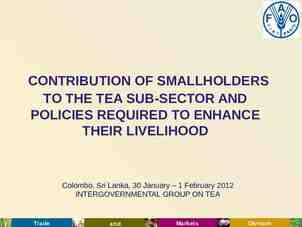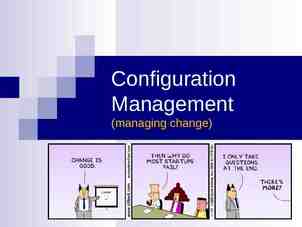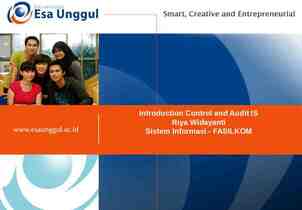Engaging with Disaster Citizen Science Toolkits for Health
35 Slides8.96 MB
Engaging with Disaster Citizen Science Toolkits for Health Departments and Community Groups to Improve Community Preparedness Ramya Chari, MPH, PhD and Sameer Siddiqi, PhD – RAND Corporation
Our presentation roadmap 1. What is citizen science? 4. Presenting the five steps to designing citizen science projects 2. How can citizen science help with preparedness? 5. Responding to collegial projects and addressing challenges 3. Introduction to the disaster citizen science toolkit
Part 1 What is citizen science? Image credit: Unitarian Universalist Service Committee, Environmental Justice Program
A brief history of citizen science: an old tradition
Citizen science can involve many different groups
There are three main models of citizen science Contributory. Science that leverages the people Collaborative. Science done with the people Collegial. Science done by the people
Part 2 How can citizen science help with preparedness?
Flint, Michigan. Community members collected drinking water to document high lead levels State officials acknowledged the problem and begin implementing mitigation actions Flickr/George Thomas, Creative Commons 2.0 ND 8
Fukushima, Japan. Community members measured radiation levels after a nuclear power plant meltdown Citizen scientists created radiation detectors that people could build themselves to collect their own data. Formed Safecast, now houses the largest dataset of background radiation levels in Safecast Map, Creative Commons NC-4.0 9
Fall 2017 hurricanes. Community members helped with disaster response using their computers at home “Digital humanitarians” analyzed satellite photos and information from people in affected areas to identify storm damage and areas in need They greatly helped the relief effort on the ground Zooniverse/Planetary Response Network 10
Deepwater Horizon oil spill. Community members captured data with balloon-generated maps and home test kits Centralized platforms and crowdsourcing apps empowered the public to contribute to disaster response in new ways Flickr/Jeff Warren; Public Lab/Creative Commons 3.0 11
The 1980s AIDS epidemic. Activists fought for better health care treatment by engaging with scientists Direct engagement with the scientific establishment changed the nature of clinical trials for AIDS drugs and helped save lives Flickr/U.S. Food and Drug Administration (public domain) 12
The Graniteville chlorine disaster. Community and local government worked together to help recovery After a train crash released chlorine gas into surrounding areas, communitybased participatory research methods helped to identify victims and track long-term health risks 13
The COVID pandemic. The public is engaging in data collection and analysis in many different ways Citizen science projects for COVID-19 have been designed to detect early outbreaks track disease transmission monitor inventories of personal protective equipment 14
These examples are disaster citizen science Disaster citizen science is the involvement of members of the public in scientific activities relating to disaster preparedness, response, and recovery. It can be done in collaboration with professional scientists or independently.
Disaster citizen science could have many benefits Education & scientific literacy Social capital Knowledge resources Future leaders Democratic decision making Improved preparednes s Community resilience eMammal/Lea Shell; Getty/PeopleImages; SkyTruth; Smithsonian Q?Crew; Uchaguzi: https://www.ushahidi.com 16
Part 3 Introduction to the Disaster Citizen Science Toolkit
Purpose of the Disaster Citizen Science Toolkit This toolkit is designed to: raise awareness of disaster citizen science activities related to preparedness provide guidance on how to design disaster citizen science projects and address implementation challenges facilitate partnerships to carry out disaster citizen science activities Includes examples from various types of natural and manmade disasters, as well as rapid-onset and slow-moving events
For Local Health Departments and Community Groups Toolkit for Local Health Departments Provide guidance on responding to projects led or supported by community groups Toolkit for Community Groups Focus on developing and implementing projects; managing common startup challenges
Elements of the Toolkit The toolkit provides educational information on disaster citizen science and walks users through the steps necessary to design a quality citizen science project of any size or scope. Chapter 1, Learn, is a primer with The toolkit contains exercises to background on disaster citizen help you reflect on what you learn science. and worksheets to help design a project and document decisions made. Chapter 2, Act, describes a five-step approach for designing disaster citizen science projects. The appendix includes a compilation of the disaster citizen science project examples described in the toolkit. The toolkit will be freely available on the RAND website following
How we developed the toolkit Review of the scientific literature Interviews with 55 people involved in disaster citizen science Catalogue of disaster citizen science projects Toolk it National survey of health department s Advisory Board discussions
Part 4 The five steps to designing disaster citizen science projects
A five-step approach to project planning Determi ne your goals Plan for action Assess your readine ss Select the best approac h Build your team The toolkit describes a five-step approach to help health departments and community groups to participate in disaster citizen science
Putting the steps together: how a community came together after Hurricane Katrina In the aftermath of Hurricanes Katrina and Rita the Beacon of Hope (BOH) Resource Center worked to rebuild New Orleans’ neighborhoods. The toolkit walks through how BOH approached different steps in its project design and implementation.
Step 1. Determine your goals for engaging in disaster citizen science Determin e your goals Could the problem benefit from citizen science? What do you want to achieve? What has been done already? What was the problem BOH faced and what did they want to achieve? BOH wished to reduce blight in New Orleans following Hurricanes Katrina and Rita but the city’s 311 telephone line and other programs were ineffective. BOH sought to combat blight and spur investment in communities.
Step 2. Select the best approach for achieving your goals How do you focus your research question? What data collection methods should you use? How do you ensure data quality? What data collection methods did BOH use? BOH realized they needed to track the condition of community properties and utilities. They used a participatory mapping approach with residents to identify and color-code properties. What skills and resources did BOH need? BOH needed funding to cover administrative and supplies costs, volunteers, and expertise on survey and mapping methods. How did BOH ensure research quality? To maintain data quality, multiple resident volunteers mapped the same area and maps were updated monthly. BOH held community given clear roles and ensured
Step 3. Build your team Who is the potential partner of interest? How are they involved in the problem? What is their position on the problem or motivation? Who were the project partners? BOH collaborated with several academic partners that assisted in data collection and data quality activities.
Step 4. Assess your readiness and Step 5. Plan for action Assess your readiness Plan for action Are you ready to implement a disaster citizen science project? Are the right resources, leadership, team skills, and volunteer management supports in place? How can you anticipate unplanned events or scenarios? How should you communicate findings in a manner that maximizes credibility?
Part 5 Responding to collegial projects and addressing common challenges
Working with collegial citizen scientists In Hawaii, the State Department of Health is working with citizen scientists to ensure safe and clean recreationαl waters. The Surfrider Foundation oversees a national network of volunteers, the Blue Water Task Force, that performs water-quality testing of recreational waters in communities. The Hawaii State Department of Health receives testing results from the local Blue Water Task Force chapter for smaller recreational areas that are not covered under state testing procedures. In addition, the State works with the Task Force on public notifications of poor water quality conditions.
Major challenges to citizen science for health departments From our health department survey, the top barriers to engaging with citizen science included: To overcome existing barriers, respondents reported needing resources to improve readiness for citizen science, including: Respondents reported specific training activities to help LHDs engage in citizen science activities, including how to: Lack of staffing (71%) Inadequa te staff training (69%) Staff training in citizen science (81%) Funding (76%) Use crowdsourc ed data (69%) Work with communit y members (67%) Uncertain funding (63%) Lack of legal/ethi cal guidance (55%) Relevant partnership s (65%) Additiona l staff (58%) Manage communit y-led data collection (64%) Use communit y-based participat ory research methods (57%) Data quality concerns (51%) Assess data quality (54%)
Addressing Common Challenges The toolkit walks through how departments/groups can address common challenges related to: Insufficient support from peer or organization leadership Insufficient resources to support activities Ethical, regulatory, and legal issues Conflicts with partners and unplanned events Strategies to ensure the quality of community-based research and data Advice from the project leaders on implementing citizen science projects
Conclusion Opportunities for preparedness and the broader field of citizen science
Opportunities and challenges Citizen science empowers communities to take collective action Potential to expand PHEP capabilities to inform recovery needs, situational awareness, and community risk Next steps
Acknowledgements RAND team Ramya Chari ([email protected]) Sameer Siddiqi ([email protected]) Lori Uscher-Pines, Elizabeth Petrun, Jaime Madrigano, Luke Matthews Advisory Council members Local health department toolkit evaluators Interview participants CDC team Mary Leinhos Robin Soler, Amy Mac Kenzie, Tonya Chapman Kimberly Leeks, Katelyn Pugh Local health department survey respondents NACCHO Team Laura Biesiadecki Debra Dekker This project was funded by the Centers for Disease Control and Prevention








































